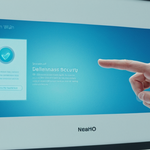
This comprehensive report examines the critical landscape of Remote Desktop Protocol (RDP) attacks and the essential secure settings required to defend against them. Remote Desktop Protocol remains one of the most frequently exploited vectors for initial network access, with cybercriminals utilizing RDP in 90% of attacks handled by incident response teams in 2023, and external remote services serving as the initial access vector in 65% of intrusion cases. Organizations face mounting pressure to secure their remote access infrastructure while maintaining operational continuity. This analysis synthesizes current threat intelligence, technical vulnerability research, and defense strategies to provide a detailed examination of how organizations can implement robust secure settings to mitigate RDP-based attacks, including brute-force attempts, credential harvesting, lateral movement, and ransomware deployment. The report addresses fundamental authentication mechanisms, network segmentation strategies, advanced monitoring capabilities, and emerging threat patterns that security professionals must understand to protect their critical infrastructure effectively.
Understanding Remote Desktop Protocol and Its Critical Security Implications
Remote Desktop Protocol is a proprietary network protocol developed by Microsoft that allows individuals to control the resources and data of a computer over the Internet. The protocol provides complete control over the desktop of a remote machine by transmitting input such as mouse movements and keystrokes and sending back a graphical user interface. While RDP provides legitimate and necessary functionality for remote system administration and business continuity, its ubiquitous deployment across enterprise environments has made it an attractive target for threat actors seeking initial access to corporate networks. The fundamental vulnerability lies not necessarily in the protocol itself but in how organizations deploy and configure RDP instances, often exposing services directly to the Internet with minimal security controls.
The default listening port for RDP is TCP port 3389, making it easily discoverable by attackers performing automated network scanning and reconnaissance. When an RDP server is configured to accept incoming connections from the Internet without proper authentication mechanisms or network restrictions, it becomes a prime target for exploitation. In one real-world attack analyzed by Darktrace, an Internet-facing server with TCP port 3389 open received a successful incoming RDP connection from a rare external endpoint utilizing a suspicious authentication cookie. The attacker likely brute-forced their way into the system, although they could have exploited a vulnerability or obtained credentials from the dark web. The significance of this attack vector became evident when the compromise escalated from initial intrusion to lateral movement within just seven hours, demonstrating the critical speed at which attackers can move through insufficiently protected environments. The organization had 7,500 devices active, yet the security team only detected the threat through specialized AI-driven analysis, as the incoming RDP connection was not flagged by other security tools because such connections were commonplace as part of normal business operations.
The attractiveness of RDP as an attack vector stems from multiple factors that create a perfect storm for cybersecurity incidents. Remote Desktop Protocol attacks do not require user input, making intrusions difficult to detect compared to social engineering attacks that rely on victim interaction. Additionally, once an attacker gains access through RDP, they obtain a graphical user interface to the system, providing them with visibility and control equivalent to sitting at the physical machine. This capability enables attackers to perform reconnaissance, escalate privileges, disable security controls, and deploy payloads such as ransomware or data exfiltration tools. The combination of ease of discovery, lack of inherent detection mechanisms, and powerful post-compromise capabilities explains why RDP remains such a persistent and dangerous attack vector in the threat landscape.
The Evolution of RDP-Based Attack Vectors and Contemporary Threat Patterns
The history of RDP attacks as a significant cybersecurity threat spans nearly a decade, with the rise of dark markets selling RDP access beginning in the mid-to-late 2016 timeframe. Malicious cyber actors developed systematic methods of identifying and exploiting vulnerable RDP sessions over the Internet to compromise identities, steal login credentials, and ransom sensitive information. The commoditization of RDP access created an underground economy where threat actors could purchase stolen RDP credentials on the dark web, with the value of such credentials determined by factors including the location of the compromised machine, software utilized in the session, and additional attributes that increased usability of the stolen resources.
In 2024, the threat landscape evolved significantly, with brute-force attacks representing the initial point of compromise in numerous ransomware incidents. Threat actors developed their own automated tools to facilitate brute-forcing attacks, and the advancement of artificial intelligence capabilities made password guessing more efficient and dangerous. However, by the first quarter of 2025, organizations observed a notable downward trend in brute-forcing attempts accompanied by a corresponding increase in cases involving exploitation of known vulnerabilities and exposures (CVEs). This shift indicates that more sophisticated threat actors are moving beyond simple credential-based attacks to leverage technical exploits targeting vulnerable RDP implementations, suggesting a consolidation of the threat actor ecosystem toward more advanced and capable groups.
Remote Desktop Protocol attacks have evolved to encompass novel and sophisticated techniques beyond traditional interactive session hijacking. In October 2024, Google Threat Intelligence Group observed a phishing campaign attributed to the Russia-nexus espionage actor UNC5837 that employed signed .rdp file attachments to establish Remote Desktop Protocol connections from victims’ machines. Unlike typical RDP attacks focused on interactive sessions, this campaign leveraged lesser-known RDP functionality including resource redirection, which mapped victim file systems to attacker servers, and RemoteApps, which presented attacker-controlled applications to victims. This technique, previously dubbed “Rogue RDP,” demonstrated how attackers could read victim drives, steal files, capture clipboard data including passwords, and obtain victim environment variables without requiring direct command execution on victim machines. The campaign likely employed an RDP proxy tool like PyRDP to automate malicious activities such as file exfiltration and clipboard capture, indicating an evolution toward more automated and scalable RDP exploitation.
Ransomware threat actors have continuously targeted RDP as an entry point, with the trend reflecting the dual nature of RDP’s attractiveness—it is simultaneously easy to identify and frequently inadequately protected. Even exposing RDP for a short duration can lead to compromise, with some instances involving RDP availability for just a few hours before attackers established their foothold. In one case examined by Sophos incident response teams, attackers successfully compromised the same victim organization four times within six months, each time gaining initial access through the customer’s exposed RDP ports. Once inside, the attackers continued lateral movement throughout the customer’s networks, downloading malicious binaries, disabling endpoint protection, and establishing remote access persistence mechanisms. This pattern illustrates how organizations that fail to implement comprehensive RDP security settings face repeated compromise despite incident response efforts, suggesting that tactical responses without strategic architectural changes prove insufficient.
The current threat landscape demonstrates that virtual private networks (VPNs) remain the most dominant remote access entry point for ransomware attacks, but there are strategic shifts in how threat actors compromise VPN services, particularly as organizations improve multi-factor authentication coverage. Simultaneously, RDP continues to represent a significant percentage of ransomware incidents, typically accounting for a small but consistent portion of events, though this represents tremendous absolute volume given the billions of RDP connection attempts observed globally. The convergence of improved VPN security through widespread MFA implementation with continued RDP exploitation suggests that threat actors are actively adapting their tactics to exploit the remaining weak links in remote access security infrastructure.
Authentication Mechanisms and Credential-Based Attack Prevention
Weak and default credentials represent a fundamental vulnerability that attackers exploit to gain unauthorized RDP access. Passwords using dictionary words or lacking a mixture of uppercase and lowercase letters, numbers, and special characters remain vulnerable to both brute-force attacks and dictionary attacks. Organizations must enforce strong password policies that mandate complex, unique passwords for all RDP accounts, with regular audits to ensure default credentials are not in use. Implementing strong, unique passwords and regularly auditing accounts to mitigate the risk of attackers easily gaining unauthorized access through brute-force methods should be considered a non-negotiable baseline security control.
Network Level Authentication (NLA) provides a critical additional layer of authentication security that should be enabled wherever possible. Network Level Authentication is a security feature in Remote Desktop Services that requires users to authenticate before a remote desktop session is established, rather than allowing the authentication dialog to appear only after a full RDP session has been initiated. This authentication can take the form of a password, smart card, or biometric authentication, with the main advantage being that NLA helps prevent unauthorized access to remote desktop sessions by requiring a valid user account and password or other authentication method before a session is established. When NLA is enabled, users must authenticate before a remote session is established, and only then is a secure connection established between the client and the server, at which point the user is granted access to the desktop. This architectural improvement reduces the attack surface by ensuring that attackers cannot enumerate usernames or interact with the full RDP protocol stack before authentication, making attacks considerably more difficult.
The security implications of disabling Network Level Authentication are severe, as it removes an important layer of authentication and can make remote desktop connections more vulnerable to unauthorized access. Without NLA enabled, an attacker could potentially access the remote desktop by guessing or brute-forcing the username and password, as the RDP interface would be fully accessible prior to authentication completion. However, there may be some cases where disabling NLA is necessary, such as when connecting to older operating systems that do not support NLA or when using third-party remote desktop software that does not support NLA. In general, it is recommended to leave NLA enabled whenever possible to ensure secure remote access to resources.
Multi-factor authentication (MFA) represents perhaps the single most impactful authentication control available to defend against credential-based RDP attacks. Research on Microsoft Azure Active Directory users demonstrates that implementing MFA reduces account compromise risk by over 99.2%, with more than 99.99% of MFA-enabled accounts remaining secure against unauthorized access, even when credentials have been leaked. Dedicated authenticator apps prove more effective than text message-based authentication, providing real-time notification and verification without reliance on potentially interceptable SMS communications. Organizations should prioritize MFA implementation for all RDP access, with particular emphasis on administrative and privileged accounts that represent the highest value targets for attackers.
However, organizations face significant deployment challenges in implementing MFA for RDP connections, as there is no direct way to activate MFA for RDP using standard Windows Remote Desktop functionality. Instead, organizations must implement substantial infrastructure changes to achieve MFA for RDP access, typically involving Remote Desktop Gateway infrastructure combined with Azure Multi-Factor Authentication Server or Network Policy Server (NPS) extensions integrated with Azure Active Directory. The complexity of this implementation should not deter organizations, as the security benefits justify the architectural investment. MFA methods selected for RDP implementation must not require users to input codes or one-time passwords, as the Remote Desktop Connection client does not provide interface options for code entry, meaning organizations should select Phone Call or Authenticator App notification methods rather than SMS or code-based approaches.
Compromised credentials emerged as the root cause of over 50% of incident response cases in 2023, and when analyzing data cumulatively from 2020 through 2023, compromised credentials represented the root cause in nearly a third of all incident response cases. Despite this historical prevalence of compromised credentials in cyberattacks, in 43% of incident response cases examined in 2023, organizations did not have multi-factor authentication configured. This substantial gap between the demonstrated need for MFA and its actual deployment represents a critical vulnerability that organizations must address through comprehensive implementation initiatives. Organizations frequently store stolen RDP credentials on dark web marketplaces, with threat actors buying and selling credentials in organized underground markets, demonstrating the persistent threat from credential compromise.

Network Isolation and Firewall-Based Access Control Strategies
Restricting direct RDP access from untrusted networks represents one of the most fundamental and effective security controls available to organizations. Having RDP port 3389 open to off-campus networks is highly discouraged and represents a known vector for many attacks. Organizations should configure their networks to ensure that RDP services are not directly accessible from the Internet, which will greatly reduce the likelihood of threat actors discovering RDP through enumeration techniques. Firewalls should block external access to port 3389 or any other custom port used for RDP, with RDP access restricted to internal networks or tunneled through a VPN infrastructure that provides additional security layers.
The most effective approach involves deploying an RDP Gateway infrastructure that restricts RDP access while maintaining legitimate remote access capabilities. Using an RDP Gateway is strongly recommended, as it provides a way to tightly restrict access to Remote Desktop ports while supporting remote connections through a single “Gateway” server. When using an RD Gateway server, all Remote Desktop services on desktops and workstations should be restricted to only allow access from the RD Gateway, ensuring that direct external access to RDP services is impossible. The RD Gateway server listens for Remote Desktop requests over HTTPS (port 443) and connects the client to the Remote Desktop service on the target machine. This architectural approach provides multiple security benefits, including encryption of RDP traffic through standard HTTPS, centralized authentication and access control, easier monitoring and logging of RDP sessions, and prevention of direct client-to-server connections that could be compromised.
Port security represents another component of network-based RDP protection, with the standard RDP port 3389 being scanned constantly by attackers as every automated tool searches for it. Changing the listening port to a non-standard port can make a meaningful difference in reducing automated attacks looking for easy targets, although it is important to recognize that this represents “security by obscurity” rather than true defense against determined attackers. Changing the listening port will help hide Remote Desktop from hackers scanning the network for computers listening on the default Remote Desktop port, offering some protection against RDP worms and automated scanning tools. Organizations should edit the registry key HKEY_LOCAL_MACHINE\SYSTEM\CurrentControlSet\Control\Terminal Server\WinStations\RDP-Tcp to change the listening port from 3389 to something else, while remembering to update any firewall rules with the new port. While this approach is helpful, it should not be relied upon as the sole RDP security control, as determined attackers will find non-standard ports through port scanning or other reconnaissance techniques.
Rate limiting on RDP servers provides essential protection against brute-force attacks by restricting the number of login attempts from a single IP address within specified time periods. Organizations should configure rate limiting on their RDP servers to restrict the number of login attempts from a single IP address—for example, limiting login attempts to five per minute per IP address. This helps thwart brute-force attacks by slowing down the attacker’s ability to rapidly guess passwords. By imposing delays after a certain number of failed attempts, it becomes impractical for attackers to continue their brute-force efforts, significantly reducing the likelihood of successful access. Account lockout policies should be configured to temporarily disable user accounts after a certain number of failed login attempts, such as locking the account for 15 minutes after five failed attempts. This helps prevent brute-force attacks by slowing down the attacker’s ability to guess passwords, making it impractical to continue the attack without being repeatedly locked out.
Restricting RDP access to specific IP addresses or address ranges provides another layer of network-based security controls. Organizations should implement firewall rules that limit RDP connection attempts to known and trusted IP addresses, blocking all other connection sources. IP whitelisting can significantly reduce the attack surface by ensuring that only authorized networks can attempt RDP connections. For organizations with remote workers, VPN requirements provide the most effective balance between security and functionality, as employees must establish a VPN connection before accessing RDP services, ensuring they connect through encrypted tunnels that hide their true IP addresses and prevent direct Internet exposure of RDP services.
Encryption, Protocol Security, and Advanced Authentication Techniques
Remote Desktop Protocol does include basic encryption built-in, but default configuration leaves systems vulnerable to man-in-the-middle attacks. Remote Desktop Protocol encryption must be properly configured, and security researchers regularly demonstrate how standard RDP configurations can be compromised if not hardened. Organizations should enforce TLS 1.2 or higher encryption for RDP connections, as older encryption standards have known vulnerabilities that sophisticated attackers can exploit. Enabling Network Level Authentication in conjunction with strong encryption standards creates multiple layers of protection against common RDP attacks and ensures connections are authenticated before they are established.
The security layer configuration for RDP connections should require the highest available encryption level, with older vulnerable RDP protocol versions disabled. Microsoft has addressed encryption standards across Windows Server editions, with support for TLS 1.1 and TLS 1.2 introduced in Windows Server 2008 R2 through specific hotfixes. Organizations should configure RDP to use the highest available encryption level and should enable the option to “Allow connections only from computers running Remote Desktop with Network Level Authentication,” ensuring that only clients supporting modern security standards can connect. This configuration prevents connections from legacy RDP clients that may have known vulnerabilities.
Restricted Admin mode provides an alternative security model where credentials are not sent to the remote host, preventing attackers on compromised remote systems from capturing user credentials. With Restricted Admin mode enabled, the Remote Desktop session connects to other resources using the remote host’s identity rather than the connecting user’s identity, meaning an attacker can act on behalf of the user only during the session and cannot use the user’s credentials for lateral movement. This mode is particularly valuable for protecting highly privileged accounts from credential theft, though it does limit the functionality of connecting with privileged credentials to other systems using single sign-on.
Remote Credential Guard represents an even more advanced security approach that prevents credentials from being sent to the remote host entirely. Remote Credential Guard redirects Kerberos requests back to the client device, ensuring that the user’s credentials remain protected and are never exposed to the remote machine. This approach preserves single sign-on capabilities for accessing other systems while preventing credential theft, even if the remote machine is compromised. Remote Credential Guard is supported on Windows systems running Windows Pro, Enterprise, and Education editions, and requires both the remote host and client to meet specific requirements, including the use of the Remote Desktop Windows application and Kerberos authentication.
Detection, Monitoring, and Real-Time Response Strategies
Comprehensive monitoring and logging of RDP sessions represents an essential security control that enables organizations to detect and respond to suspicious activity before significant damage occurs. Windows Event Viewer provides built-in monitoring capabilities, with key event IDs representing different RDP-related activities: Event ID 4624 represents successful logon attempts, while Event ID 4625 represents failed logon attempts. Organizations should regularly review these logs for unusual patterns or repeated access failures, which could indicate brute-force attacks in progress. Advanced monitoring tools should detect and alert on multiple failed login attempts from unfamiliar locations or at unusual times, enabling rapid detection and response to potential attacks.
Real-time monitoring and alerts enable rapid detection and response to potential brute-force attacks, allowing security teams to take immediate action to investigate and mitigate threats. This real-time alerting capability is crucial for improving Mean Time to Detect (MTTD)—a critical metric measuring the average time taken to identify a threat—as faster detection times enable faster response times, which in turn reduce potential damage and mitigate the overall impact of security breaches. Security Information and Event Management (SIEM) solutions aggregate logs from multiple Windows servers, providing centralized visibility into RDP session patterns and enabling correlation of events that might indicate coordinated attacks.
Microsoft Defender for Endpoint provides advanced RDP monitoring capabilities by adding detailed layer of session information to detected process activities. The solution adds eight extra fields to process information in Advanced Hunting tables, enriching data by including session details that provide context regarding whether processes were initiated within RDP sessions. Key fields include InitiatingProcessRemoteSessionIP, which provides the IP address of the remote device from which a process’s RDP session was initiated, and IsInitiatingProcessRemoteSession, which indicates whether the initiating process was run under an RDP session. These capabilities enable defenders to correlate RDP session information with suspicious process executions, making it possible to detect hands-on-keyboard-style attacks where human operators control systems through RDP.
Detailed RDP session logging should be configured to capture comprehensive information about all remote access activities. Organizations should enable both failure and success logs in their audit policies by navigating to Local Security Policies → Local Policies → Audit Policy and enabling “Audit logon events” for both successes and failures. This provides a detailed accounting of who is logging in and whether the attempts succeed or fail, creating audit trails that support both security investigations and compliance requirements. Session timeouts should be configured to automatically disconnect idle RDP sessions after specified durations, ensuring abandoned sessions do not remain open and vulnerable to unauthorized access.
Organizations should monitor for anomalous RDP activities that could indicate compromise, including suspicious command execution patterns, lateral movement attempts via Remote Desktop Protocol, and administrative access from unexpected locations or times. In the Darktrace case study, network scanning activity within the compromised device’s subnet represented an early indicator of malicious activity, with Windows Management Instrumentation connections made to multiple devices over DCE-RPC triggering multiple alerts. The progression from initial compromise through reconnaissance to lateral movement demonstrated how comprehensive monitoring can identify attack chains in progress, though the attack happened outside normal business hours—at times when security teams were off work—highlighting the critical importance of automated detection and response systems that operate around the clock.
Attack disruption technologies provide automated response capabilities that can immediately contain threats without requiring human intervention. In a notable ransomware case study involving Akira ransomware targeting a small-to-medium manufacturer, attack disruption detected the threat actor’s attempt to run the encryption payload and automatically contained the user accounts and compromised device before the attacker could proceed. This automated response prevented widespread encryption and data exfiltration that would have occurred without rapid detection and containment.

Vulnerability Management and Patch Administration
Remote Desktop Protocol software vulnerabilities have consistently represented significant security risks, with numerous CVEs documented and actively exploited by threat actors. The BlueKeep vulnerability (CVE-2019-0708) exemplified the critical severity of RDP vulnerabilities, representing a Use After Free vulnerability related to a dangling object—the MS_T120 virtual channel. This vulnerability allowed attackers to achieve remote code execution with system privileges without any user interaction, potentially enabling mass exploitation through worms. While Microsoft released an out-of-band patch in May 2019, the vulnerability demonstrated how RDP vulnerabilities can create systemic risks affecting millions of systems if not properly patched.
Contemporary RDP vulnerabilities continue to emerge with concerning frequency and severity. In 2025, Microsoft addressed multiple buffer overflow vulnerabilities affecting RDP client bitmap compression, including CVE-2025-29966 and CVE-2025-29967, which were assigned a CVSS score of 8.8—indicating very severe risk. These vulnerabilities enable code execution when users connect to compromised RDP servers or when man-in-the-middle attackers intercept connections, with the concerning characteristic that neither the server nor the user needs to confirm the exploit, as all the attacker requires is for a user to connect. A faulty RDP server trap could involve an attacker creating a phony RDP server appearing legitimate, waiting for someone to connect, and then sending modified route data or bitmap data that allows code execution on the connecting client system.
Organizations must implement robust patch management processes to ensure RDP systems receive timely updates. One advantage of using Remote Desktop rather than third-party remote admin tools is that components are updated automatically with the latest security fixes in the standard Microsoft patch cycle. Organizations should ensure they are running the latest versions of both client and server software by enabling and auditing automatic Microsoft Updates. If organizations are using Remote Desktop clients on other platforms, they should ensure those clients are still supported and that they have the latest versions, as older versions may not support high encryption and may have other security flaws.
Organizations should maintain an understanding of which CVEs are known to be actively exploited by ransomware groups and prioritize patching of these vulnerabilities. In Q1 2025, ransomware threat actors actively exploited CVEs including CVE-2023-48788, CVE-2021-31207, CVE-2024-26229, CVE-2024-55591, CVE-2022-42475, CVE-2023-27997, and CVE-2025-23006. By maintaining awareness of actively exploited vulnerabilities and prioritizing their remediation, organizations can prevent attackers from leveraging known technical weaknesses to breach their networks.
Domain Controller Compromise and Lateral Movement Prevention
Domain controllers represent the backbone of any on-premises environment, managing identity and access through Active Directory. Cyberattackers consistently target domain controllers to gain privileged access, move laterally, and rapidly deploy ransomware across environments, with more than 78% of human-operated cyberattacks involving successful breaches of domain controllers. In more than 35% of cases, the primary spreader device—the system responsible for distributing ransomware at scale—is a domain controller, highlighting the critical importance of protecting these systems from RDP-based compromise.
Domain controllers fulfill two critical requirements that make them attractive targets for cyberattackers. First, domain controllers house the Active Directory database, which contains sensitive information about all user accounts, including highly privileged accounts like domain admins, and compromising a domain controller enables cyberattackers to extract password hashes by dumping the NTDS.dit file, obtaining password hashes for every user account. Attackers can also create and elevate privileged accounts, manipulate existing accounts, and assign them elevated permissions, ensuring continued control over the environment. With these capabilities, cyberattackers can authenticate as highly privileged users, facilitating lateral movement across the network and enabling deployment of ransomware at scale, maximizing the impact of their attacks.
Second, domain controllers handle crucial authentication tasks, manage user accounts and policies, and maintain Active Directory database consistency across the network. Because domain controllers need to be central in the network and accessible to many endpoints to ensure security, efficient resource management, and operational continuity, they represent prime targets for cyberattackers looking to cause maximum damage. In one notable case, a small-to-medium manufacturer fell victim to an Akira ransomware attack where cyberattackers gained initial access presumably through leveraging the customer’s VPN infrastructure, and then performed reconnaissance prior to obtaining domain admin privileges. After gaining access to domain admin User 2 credentials, potentially through leveraging the victim’s non-onboarded estate, the attacker immediately attempted to connect to the victim’s domain controller using Remote Desktop Protocol from the cyberattacker’s controlled device.
Once securing domain admin credentials, the attacker leveraged the domain controller to perform reconnaissance using different tools to map networks, focusing on servers and network shares. The attacker performed defense evasion by leveraging the domain controller’s native group policy functionality to attempt tampering with the victim’s antivirus by modifying security-related group policy settings. For persistence, the attacker leveraged direct access to Active Directory to create new domain users and added them to the domain admin group, establishing highly privileged users that would later be used to execute the ransomware attack. This progression from RDP compromise to domain controller control to enterprise-wide ransomware deployment illustrates the critical importance of protecting domain controllers from RDP-based access.
Organizations should implement least-privilege principles for domain controller access, ensuring that administrators do not log in with highly privileged domain admin accounts for everyday administrative tasks. By using least privilege, administrators can reduce the scope of compromise if their accounts are compromised through RDP or other vectors. If an attacker compromises a domain admin account through RDP or related attacks, the attacker gains Active Directory administrative access, enabling widespread damage including enterprise-wide ransomware deployment. In contrast, if the compromised account has lower privilege levels, the attack’s scope is significantly limited. Organizations should implement just-in-time privilege elevation that only grants admin access when actually needed and only for specific applications, eliminating the risk of permanent admin access that compromised accounts could exploit.
Emerging Attack Trends and Advanced Threat Vectors
Recent observations demonstrate that threat actors are actively developing botnets specifically targeting RDP services, with over 500,000 unique IP addresses targeting RDP services in the past 90 days as of October 2025. From September 2025 to the present, organizations observed a steady rise in the number of unique IPs targeting RDP, with attackers rotating significant volumes of new IPs each day to target two primary vectors—RD Web Access timing attacks and RDP web client login enumeration. This IP rotation strategy appears designed to evade detection and blocking mechanisms, making traditional IP-based blacklisting insufficient without dynamic updating capabilities. Geographic distribution of this attack activity shows Brazil representing 63% of source countries, Argentina 14%, and Mexico 3%, with nearly 100 percent of targeting directed at U.S.-based systems.
The attacks focus on two key technical vectors: RD Web Access anonymous authentication timing attacks and RDP web client login enumeration checks. These timing-based attack methodologies represent a shift from traditional brute-force approaches, instead attempting to enumerate valid usernames and identify systems through timing characteristics of authentication responses. Organizations should monitor for unusual patterns of authentication-related traffic, particularly from distributed sources attempting rapid enumeration of user accounts.
Advanced persistent threat actors have demonstrated innovative approaches to RDP exploitation beyond traditional remote session hijacking. The UNC5837 campaign targeting European government and military organizations employed signed .rdp file attachments to establish connections that leveraged RemoteApps and resource redirection without requiring interactive session control. The campaign likely involved RDP proxy tool automation like PyRDP to extract files and clipboard data containing sensitive information. This represents a significant evolution in RDP attack techniques, demonstrating how adversaries continue to identify and exploit lesser-known RDP features to achieve their objectives while potentially evading detection mechanisms focused on identifying interactive session-based attacks.
Organizations face an emerging landscape where insider threats tied to nation-states like North Korea targeting organizations to steal information and fund national initiatives have tripled. These advanced nation-state actors possess sophisticated capabilities to compromise RDP infrastructure and exploit it as part of broader espionage or theft operations, requiring organizations to implement advanced threat detection and response capabilities that can identify insider threats and nation-state-level attacks.

Comprehensive Secure Settings Framework and Implementation Strategy
Organizations should implement a comprehensive secure settings framework for RDP that addresses authentication, network isolation, monitoring, and threat response as interconnected components of a unified strategy. Implementation should follow a graduated approach, beginning with fundamental baseline controls and progressively layering more advanced capabilities as organizational maturity increases. The first stage should verify and secure every identity with strong authentication, ensuring that all user identities accessing RDP resources are authenticated using strong passwords and multi-factor authentication. The second stage should implement Network Level Authentication, restrict access using firewalls, and begin monitoring RDP session activity. The third stage should enroll devices in device management solutions, apply recommended security protections, and allow only compliant and trusted devices to access RDP-exposed resources. The fourth stage should monitor device configuration drift and implement passwordless authentication approaches that eliminate the need for passwords altogether.
Organizations should also consider deploying Zero Trust architectures for remote access that eliminate implicit trust in remote connections and enforce continuous authentication and verification. Zero Trust principles require that multifactor authentication with Conditional Access be applied to all user identities accessing the environment, devices be enrolled in device management and monitored for health, and access to applications and data require verification of identities, healthy devices, and appropriate data access. When applied to RDP, Zero Trust removes the implicit trust granted after initial authentication, instead implementing continuous verification throughout the session lifecycle and enforcing granular access controls limiting users to specific resources required for their job functions.
Remote Credential Guard and Restricted Admin mode represent advanced protective technologies that organizations should evaluate for deployment to privileged accounts. These technologies prevent credentials from being exposed to remote hosts even if those hosts are compromised, protecting high-value accounts from credential theft that could enable lateral movement and domain controller compromise. Remote Credential Guard is particularly valuable for organizations with complex environments where users frequently access multiple systems through RDP, as it preserves single sign-on capabilities while preventing credential exposure.
Compliance requirements across multiple regulatory frameworks mandate secure RDP configurations and monitoring. HIPAA requires strict measures to secure protected health information, including encryption, access controls, and activity tracking. GDPR mandates that any remotely accessed data must be encrypted, protected, and only available to authorized personnel, with non-compliance leading to fines as high as €20 million or 4% of global turnover. PCI DSS compliance requires secure remote access solutions to protect customer payment data from breaches, with features like MFA being must-haves to meet these requirements. Organizations should implement remote access solutions featuring advanced encryption standards like AES 256-bit encryption, multi-factor authentication, role-based access control, session monitoring and logging, automatic updates and patch management, and detailed data access reporting.
Fortifying Your Remote Desktop Defenses
Remote Desktop attacks represent a critical and persistent threat to organizational security, with cybercriminals utilizing RDP in 90% of attacks handled by incident response teams and external remote services serving as the initial access vector in 65% of intrusions. Organizations must implement comprehensive secure settings frameworks that address the full spectrum of RDP-related risks through coordinated controls spanning authentication, network architecture, encryption, monitoring, and incident response capabilities.
The fundamental strategic recommendation is that organizations must eliminate direct Internet exposure of RDP services whenever possible through network segmentation and gateway architectures that route all remote access through controlled chokepoints. Organizations that cannot eliminate Internet-facing RDP must implement multiple compensating controls including strong authentication mechanisms such as Network Level Authentication and multi-factor authentication, encryption of all RDP communications using TLS 1.2 or higher, rate limiting and account lockout policies to defeat brute-force attacks, and comprehensive monitoring and logging to detect compromise attempts.
Organizations should prioritize implementation of multi-factor authentication for all RDP access, recognizing that this single control reduces account compromise risk by over 99.2% even when passwords are compromised. The complexity of implementing MFA for RDP through gateway and NPS infrastructure should not deter organizations from pursuing this critically important protection, as the security benefits justify the architectural investment. Organizations should simultaneously work toward eliminating dependency on passwords altogether through implementation of passwordless authentication mechanisms such as Windows Hello for Business, smartcards, and biometric authentication that cannot be compromised through credential theft.
Organizations should implement 24/7 automated monitoring and response capabilities that can detect and contain RDP-based attacks without requiring human intervention outside business hours, recognizing that attackers frequently operate during times when security teams are off-duty. Advanced threat detection systems should correlate RDP session information with endpoint activity patterns to identify hands-on-keyboard style attacks characteristic of human-operated ransomware campaigns. Organizations should maintain current patch levels for all RDP infrastructure components, prioritizing remediation of publicly known vulnerabilities identified as actively exploited by ransomware groups.
Finally, organizations should recognize that RDP security represents a critical component of overall infrastructure security strategy, not an isolated technical problem to be solved through individual controls. The progression from RDP compromise through reconnaissance, to lateral movement, to domain controller compromise, and ultimately to enterprise-wide ransomware deployment demonstrates how RDP security failures cascade into organizational catastrophe. By implementing comprehensive secure settings frameworks that integrate strong authentication, network isolation, advanced monitoring, and automated response capabilities, organizations can substantially reduce their risk from RDP-based attacks and defend their critical infrastructure against determined adversaries.
Protect Your Digital Life with Activate Security
Get 14 powerful security tools in one comprehensive suite. VPN, antivirus, password manager, dark web monitoring, and more.
Get Protected Now





